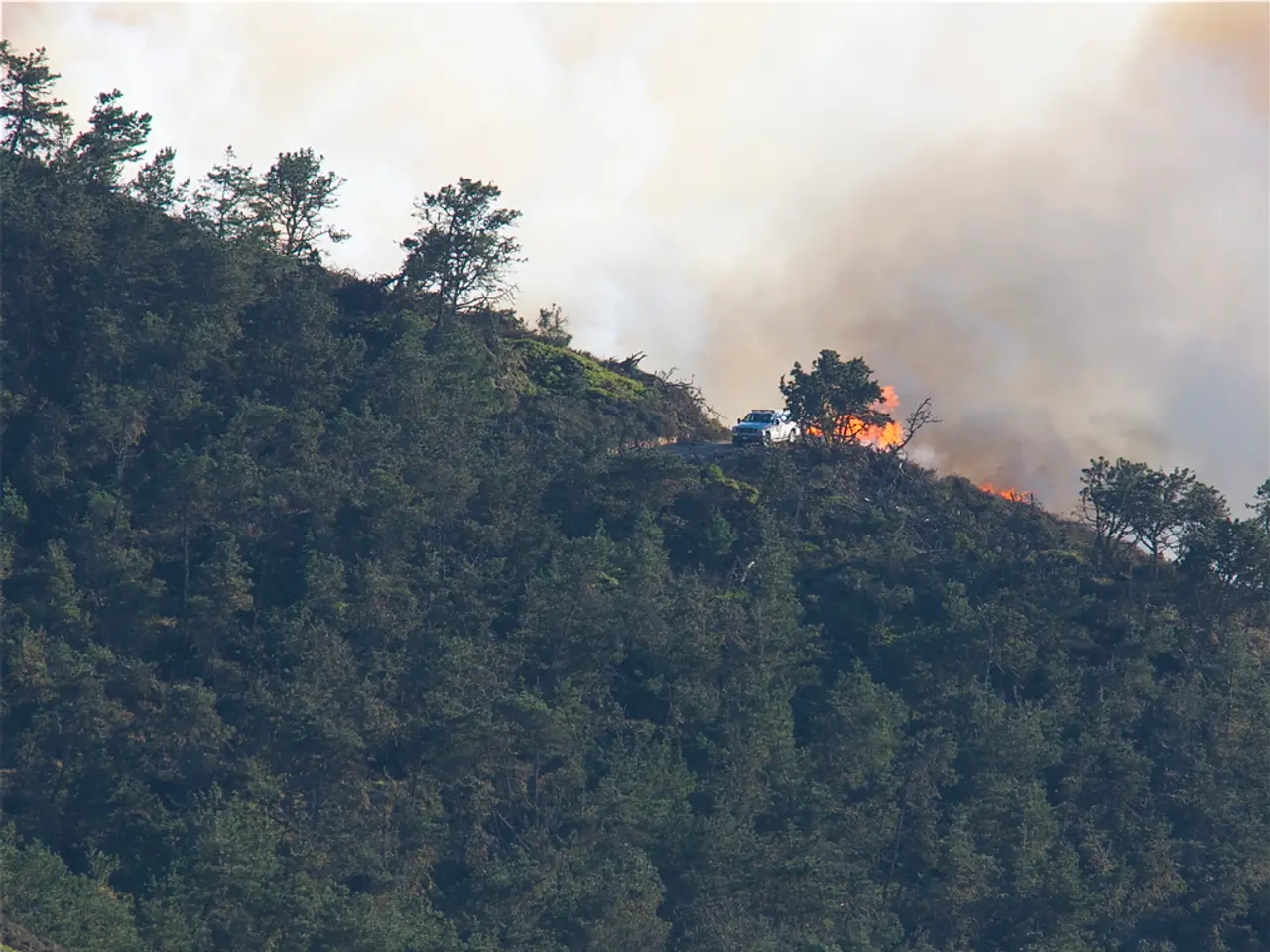Warnings issued by Pakistan's Disaster Management Authority: Continual rainfall and floods anticipated through July 10th
Pakistan is bracing itself for another round of heavy monsoon rains, with the National Disaster Management Authority (NDMA) issuing a warning for more showers, floods, and landslides from July 6 to July 10. The country, which is home to over 240 million people, is consistently ranked among the countries most vulnerable to climate change.
The current monsoon forecast indicates ongoing heavy rainfall across various regions, with Punjab, Khyber Pakhtunkhwa, Islamabad, Gilgit-Baltistan, Kashmir, Sindh, and Balochistan all expected to be affected.
In Punjab, torrential monsoon rains are expected to continue, particularly affecting cities like Rawalpindi, Murree, Galiyat, Attock, Gujrat, Jhelum, and Gujranwala. Southern Punjab cities such as Multan, Dera Ghazi Khan, and Bahawalpur are also expected to receive significant rain, which may lead to localized flooding.
Khyber Pakhtunkhwa, Islamabad, Gilgit-Baltistan, and Kashmir are prone to heavy rains, strong winds, and possible landslides in mountainous regions. Residents are advised to be cautious, as the recent past has seen severe incidents of flash flooding and landslides.
Sindh and Balochistan could still experience occasional rain showers and strong winds, particularly in urban areas like Karachi and Hyderabad. Downpours are also expected in Quetta, Zhob, Khuzdar, and Sibi in Balochistan.
The risks associated with these rains are numerous. Floods and landslides are predicted for areas prone to such disasters, with residents in mountainous regions and urban areas advised to prepare for potential blockages and overflowing rivers. Strong winds and thunderstorms are expected to hit many regions, which can lead to structural damage and power outages.
The NDMA has advised citizens to exercise caution during the forecast period, staying away from rivers and canals, weak structures, electricity poles, and billboards due to the risk of accidents during storms. Citizens are also encouraged to avoid low-lying areas, as there is a risk of flooding in such areas, as well as the overflowing of rivers and canals, and landslides in mountainous areas.
Unfortunately, the monsoon season has already taken a heavy toll on Pakistan. More than 1,700 people were killed due to the 2022 floods in Pakistan, and in less than a week, 64 people have been killed due to rains and floods. The NDMA has not issued any new warnings or predictions beyond the previously stated forecast period of July 6 to July 10.
Pakistan is currently experiencing an extreme monsoon season that is expected to last till mid-September. The 2022 floods, which were caused by record-breaking monsoon rains and glacier melt, affected 33 million people in Pakistan.
As the country navigates another round of heavy rains, it is a stark reminder of the challenges posed by climate change and the importance of disaster preparedness and response.
- Amidst Pakistan's ongoing monsoon season, the general news is abuzz with updates on the heavy rainfall impacting various regions, including Punjab, Khyber Pakhtunkhwa, Islamabad, Gilgit-Baltistan, Kashmir, Sindh, and Balochistan.
- The scientific community is closely monitoring the climate-change effects on the country, as Pakistan consistently ranks among the most vulnerable to climate change, with the current news highlighting the ongoing devastation caused by these rains, such as floods and landslides.
- Environmental-science experts are urging citizens to stay informed, heed safety advice, and prepare for potential environmental disasters, as these heavy monsoon rains underline the importance of understanding and addressing climate change to mitigate future impacts on the country.








